Étiquette : Quatuor Pro Arte

Mozart Quintet K.516
Quatuor Pro Arte
(Alphonse Onnou & Laurent Halleux, violon, Germain Prévost, alto, Robert Maas, violoncelle); Alfred Hobday, alto II
Abbey Road Studio n°3 – 15 February 1934
____________
Mozart Quartet K.478
Artur Schnabel, piano; Membres du Quatuor Pro Arte (Alphonse Onnoux, violon, Germain Prévost, alto, Robert Maas, violoncelle)
Abbey Road Studio n°3 – 31 January 1934
Source: 33t/LP Toshiba-EMI Angel Japan GR-2026
Voici deux enregistrements mozartiens du Quatuor Pro Arte, à savoir le chef d’œuvre absolu que constitue le Quintette en sol mineur K.516, couplé au Quatuor avec piano K.478, également en sol mineur, avec Artur Schnabel.
Pour le disque GR-2026 qui fait partie d’une série de rééditions japonaises en microsillons réalisée avec le plus grand soin à partir des matrices métalliques d’origine, il y a étonnamment peu de bruits de surface (sauf au début du Quatuor K.478).
Pour le Quintette K.516, la partie de deuxième alto est tenue par Alfred Hobday (1870-1942) qui a été le partenaire du Quatuor Pro Arte pour leurs enregistrements de Quintettes et de Sextuors (Mozart Quintettes K.515, K.516 et K.596, Brahms Sextuor n°1 Op.18), mais également du Budapest Quartet (Brahms Quintette n°1 Op.88 et Sextuor n°2 Op.36). Les faces enregistrées le 14 février 1934 (matrices 2B 6023-6029) ont toutes été rejetées et détruites, et le Quatuor a de nouveau enregistré le Quintette le lendemain (matrices 2B 6030-6037).
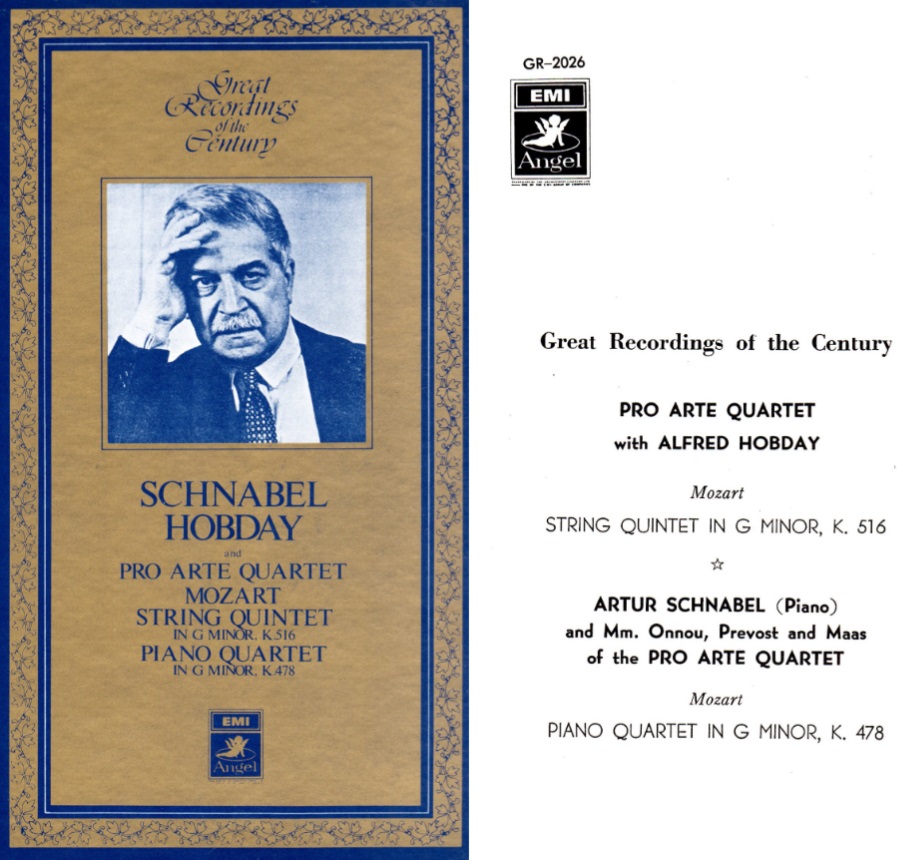
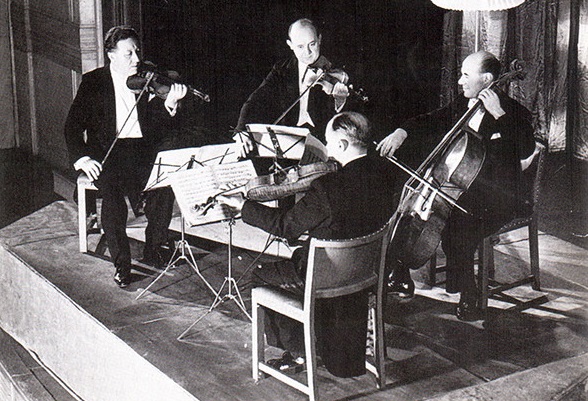
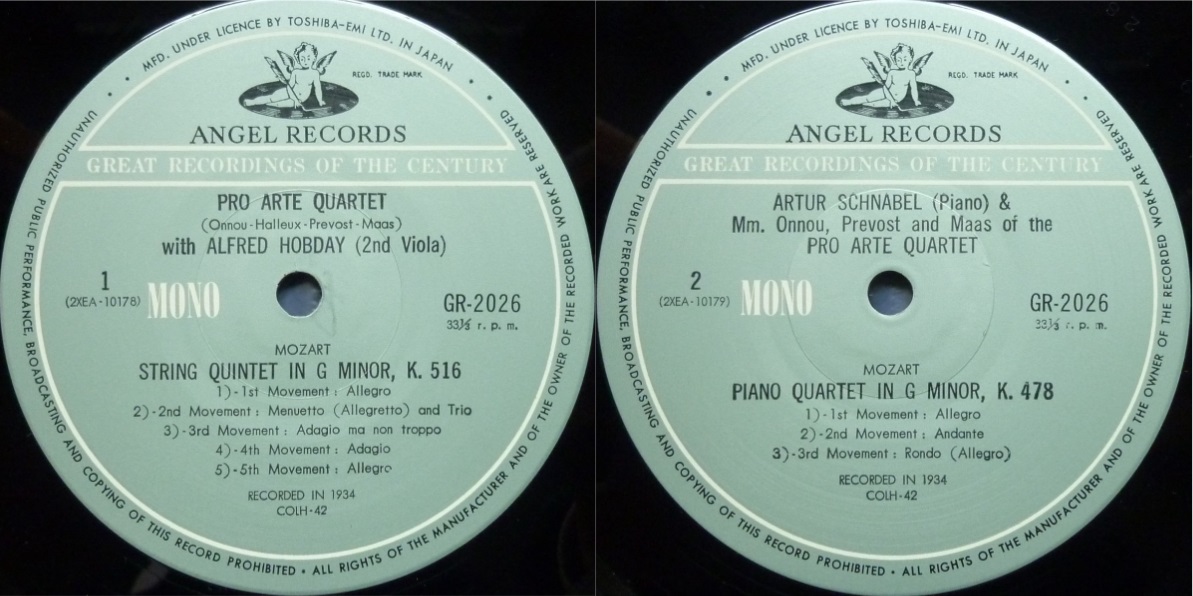
Here are two Mozart recordings by the Quatuor Pro Arte, namely the absolute masterpiece that is the Quintet in G minor K.516, coupled with the Piano Quartet K.478, also in G minor, with Artur Schnabel.
On the GR-2026 disc, one of a series of Japanese LP reissues made with great care from the original metal parts, there is surprisingly little surface noise (except at the beginning of the Quartet K.478).
In the Quintet K.516, the part of second viola is played by Alfred Hobday (1870-1942), who was the partner of the Pro Arte Quartet for their recordings of Quintets and Sextets (Mozart Quintets K.515, K.516 and K.596, Brahms Sextuor n°1 Op.18), but also of the Budapest Quartet (Brahms Quintet No.1 Op.88 and Sextet No.2 Op.36). The sides recorded on 14 February 1934 (matrices 2B 6023-6029) were all rejected and destroyed, and the Quartet recorded the Quintet again the following day (matrices 2B 6030-6037).
Les liens de téléchargement sont dans le premier commentaire. The download links are in the first comment

Artur Schnabel, piano
Quintette Op.44 Quatuor Pro Arte
Abbey Road Studio n°3 – 19 November 1934
Source: 33t/LP Toshiba-EMI Angel Japan GR-2169
Concerto Op.54 Alfred Wallenstein Los Angeles Philharmonic Orchestra (LAPO)
Glendale (CA) – Hoover High School 4 March 1945
Source: 33t./LP Bruno Walter Society BWS-724 – annonce/announcement: fichier mp3/mp3 file (Internet)
Artur Schnabel a peu enregistré Schumann pour le disque, uniquement ce Quintette et les Kinderszenen. On a deux enregistrements publics du Concerto pour piano, l’un avec le NYPO et Pierre Monteux, et l’autre avec le LAPO et Alfred Wallenstein. Au programme de ses récitals, on trouve rarement des œuvres de Schumann (Davidsbündlertänze Op.6 et Fantaisie Op.17).
En 1975, lorsque BWS a publié en microsillon l’enregistrement du Concerto avec Alfred Wallenstein, Karl-Ulrich, le fils du pianiste, l’a écarté comme étant un faux. Pourtant, l’enregistrement du concert complet existe avec les annonces radio (il est disponible en mp3 sur Internet), et Schnabel en relate les conditions très particulières dans une lettre datée du 5 mars 1945 à son amie et confidente Mary Virginia Foreman:
‘ Hier soir, c’était le premier concert à Glendale. C’était la ‘Standard Oil West Coast hour’. Ils m’ont trompé en ne me le disant pas, et j’ai joué pour le même cachet que pour les autres concerts, où personne sauf les gens présents dans la salle peuvent entendre l’exécution. Je suis heureusement assez vieux pour ne pas faire d’histoires ou me mettre en colère. Le concert – si on peut le dénommer ainsi – n’avait aucun sens. Répétition à 16h30. J’ai donc joué le Schumann trois fois en l’espace de quatre heures. La ‘Standard Hour’ se doit de bourrer soixante minutes avec de la musique. Elle l’a fait avec: Ouverture d’Hansel and Gretel, Air du Concours de Wagner (sans chanteur), le Concerto de Schumann, et l’Apprenti de Dukas – et quelques mots pour les retardataires. La salle, une grange hyper-résonnante.’
Si le jeu de Schnabel est ici inhabituel au point d’avoir dérouté son propre fils, ceci semble dû au peu de temps de répétition qui a empêché une coordination entre les deux musiciens et à la direction un peu rude et peu différenciée de Wallenstein, qui a cependant l’avantage d’imprimer une tension permanente (ou si on veut, une ’fièvre schumanienne’) au discours musical, qui semble manquer parfois à la version plus orthodoxe avec Pierre Monteux*. Autrement dit, Schnabel est ici sous pression.
L’enregistrement du Quintette Op.44 possède toute la tension nécessaire, mais Schnabel joue avec ses partenaires habituels du Quatuor Pro Arte.
* Concert donné une seule fois à Carnegie Hall avec le NYPO le 13 juin 1943 (au lieu du 27 juin), avec une seule répétition le 12, donc des conditions à peine meilleures qu’en Californie 2 ans plus tard.
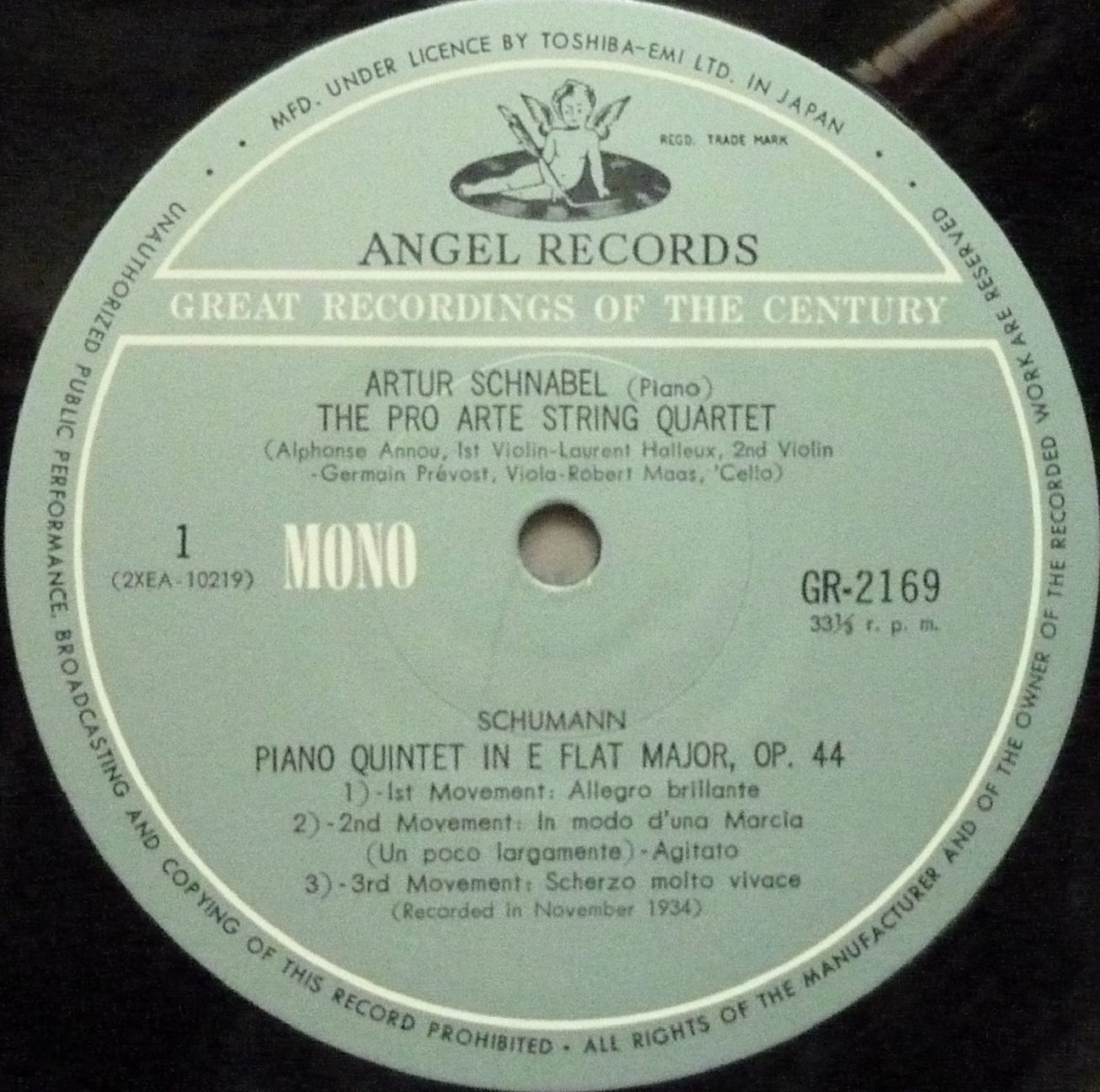
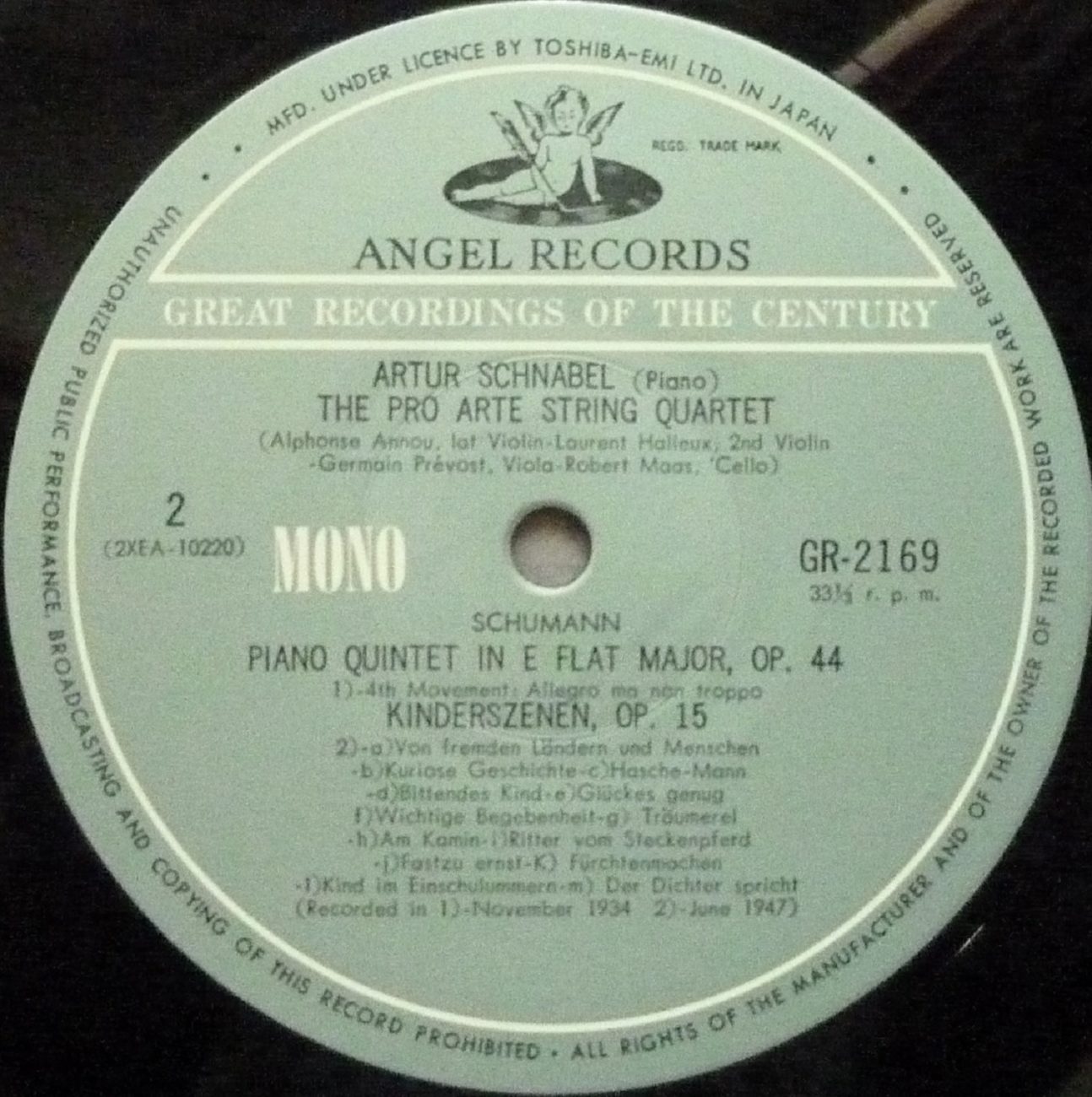
Artur Schnabel has made only two commercial recordings of the music by Schumann, only this Piano Quintet and the Kinderszenen. We have two live recordings of the Piano Concerto, one with the NYPO and Pierre Monteux, and one with the LAPO and Alfred Wallenstein. In his recitals, he rarely performed works by Schumann (Davidsbündlertänze Op.6 et Fantaisie Op.17).
In 1975, when BWS isued the LP with the recording of the Concerto with Alfred Wallenstein, the pianist’s son Karl-Ulrich dismissed it as a counterfeit. However, a complete recording of the concert exists with the radio announcements (it is available as a mp3 on the Internet), and Schnabel describes the very peculiar conditions in a letter dated Mars 5, 1945 to his friend and confidante Mary Virginia Foreman:
‘ Last night was the first concert in Glendale. It was the Standard Oil West Coast hour. They cheated me by not telling me this, and I played for the same fee as for the other concerts, when nobody except the people in the hall can hear the performance. I am, fortunately, now old enough not to get fussy or angry. The concert – if one could call it that – was just barbarous. Rehearsal at 4.30pm. I accordingly played tne Schumann three times within four hours. The Standard Hour has to stuff sixty minutes with music. It did with: Hansel and Gretel Overture, Prize Song by Wagner (no singer), Schumann Concerto, Dukas’ Apprentice – and words for latecomers. The place, an over-resonant barn.’
If Schnabel’s playing is here unusual to the point of having puzzled his own son, it seems to be due to the lack of rehearsal time which did not allow a coordination between the two musicians and to the rather hard and undifferenciated rendering of the score by Wallenstein, which however has the advantage of bringing a permanent tension (or ‘Schumann fever’ if you will) to the musical discourse, which seems to be lacking at times in the more conventional performance with Pierre Monteux*. In other words, Schnabel plays under pressure.
The recording of the Quintette Op.44 has all the required tension, but Schnabel plays with his longtime partners of the Quatuor Pro Arte.
* Concert given only once at Carnegie Hall with the NYPO on June 13, 1943 (instead of June 27), with a single rehearsal on June 12, thus hardly better conditions than in California 2 years later.
Artur Schnabel, piano; Alphonse Onnou, violon; Germain Prévost, alto,
Robert Maas, violoncelle, Claude Hobday, contrebasse
London Abbey Road Studio n°3 – November 16, 1935
Engineer: Edward Fowler

Artur Schnabel et les membres précités du Quatuor Pro Arte (biographie par Anne van Malderen) ainsi que le contrebassiste Claude Hobday (1872-1954) ont enregistré ce quintette « La Truite » en 1935, mais la qualité sonore de cet étonnant microsillon japonais EMI-Toshiba GR-2020 du milieu des années soixante, gravé à partir de reports effectués à Londres par Anthony Griffith, donnerait plutôt à penser qu’il a été enregistré bien plus tard. L’explication est d’une part la prise de son du magicien Edward Fowler et d’autre part que l’on est en présence d’une copie directe et sans traitement de pressages vinyles effectués à partir de matrices métalliques de qualité exceptionnelle.
_______________
Artur Schnabel and said members of « Quatuor Pro Arte » (biography by Anne van Malderen) together with double-bass player Claude Hobday (1872-1954) have recorded this « Trout Quintet » in 1935, but the sound quality of this astonishing Japanese LP EMI-Toshiba GR-2020 from the mid-60s, cut from transfers made in London by Anthony Griffith would rather suggest a much later recording date. The explanation is on the one hand the sound captured by the magician Edward Fowler and on the other hand that this is an unprocessed transfer from vinyl pressings made from exceptionally clean metal parts.
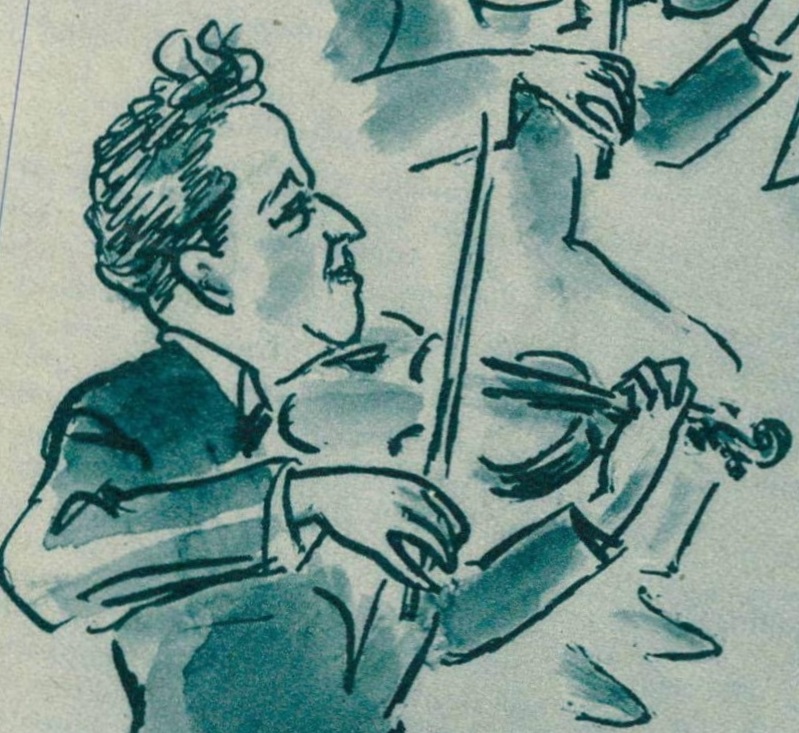
Alphonse Onnou, violon

Robert Maas, violoncelle & Germain Prévost, alto
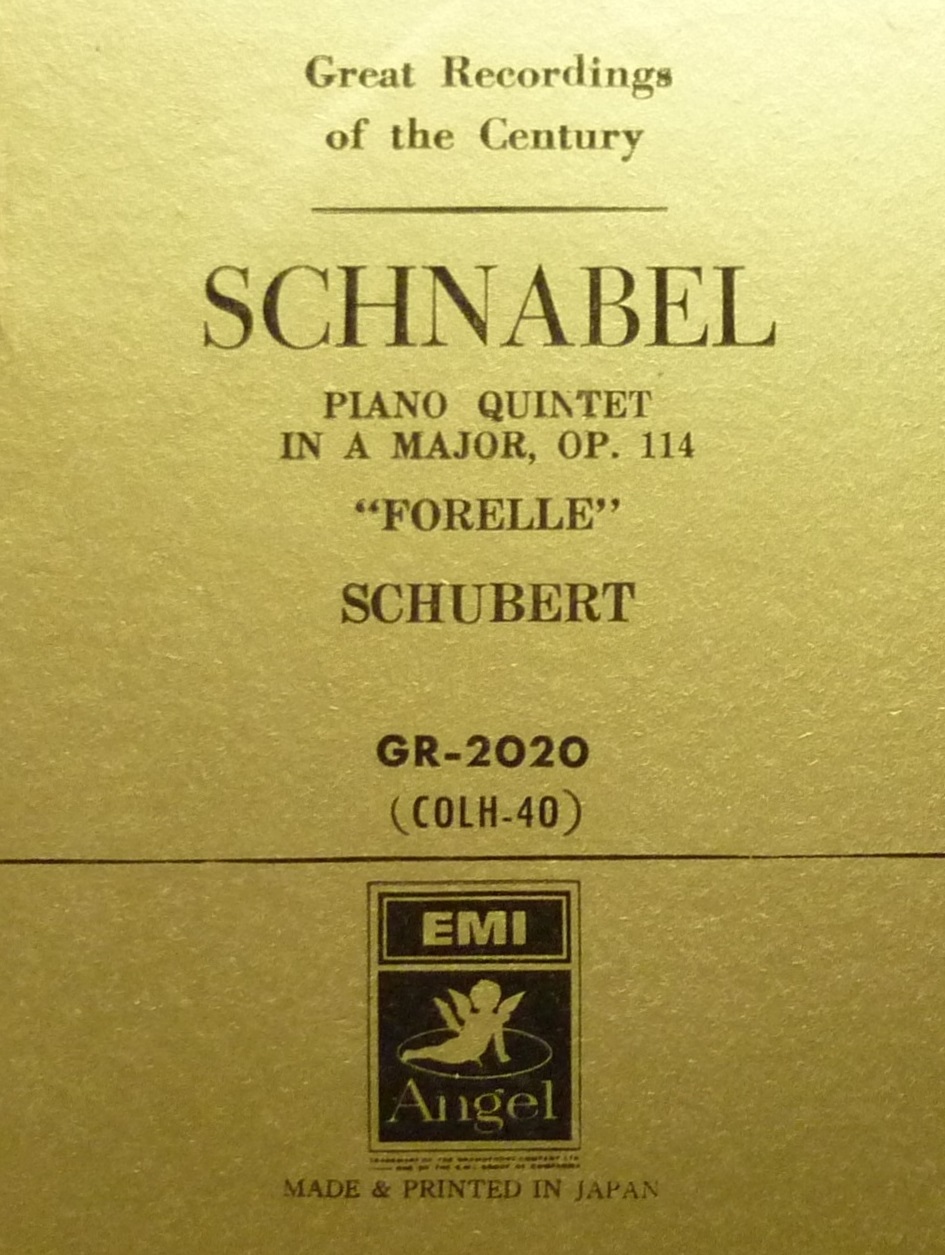
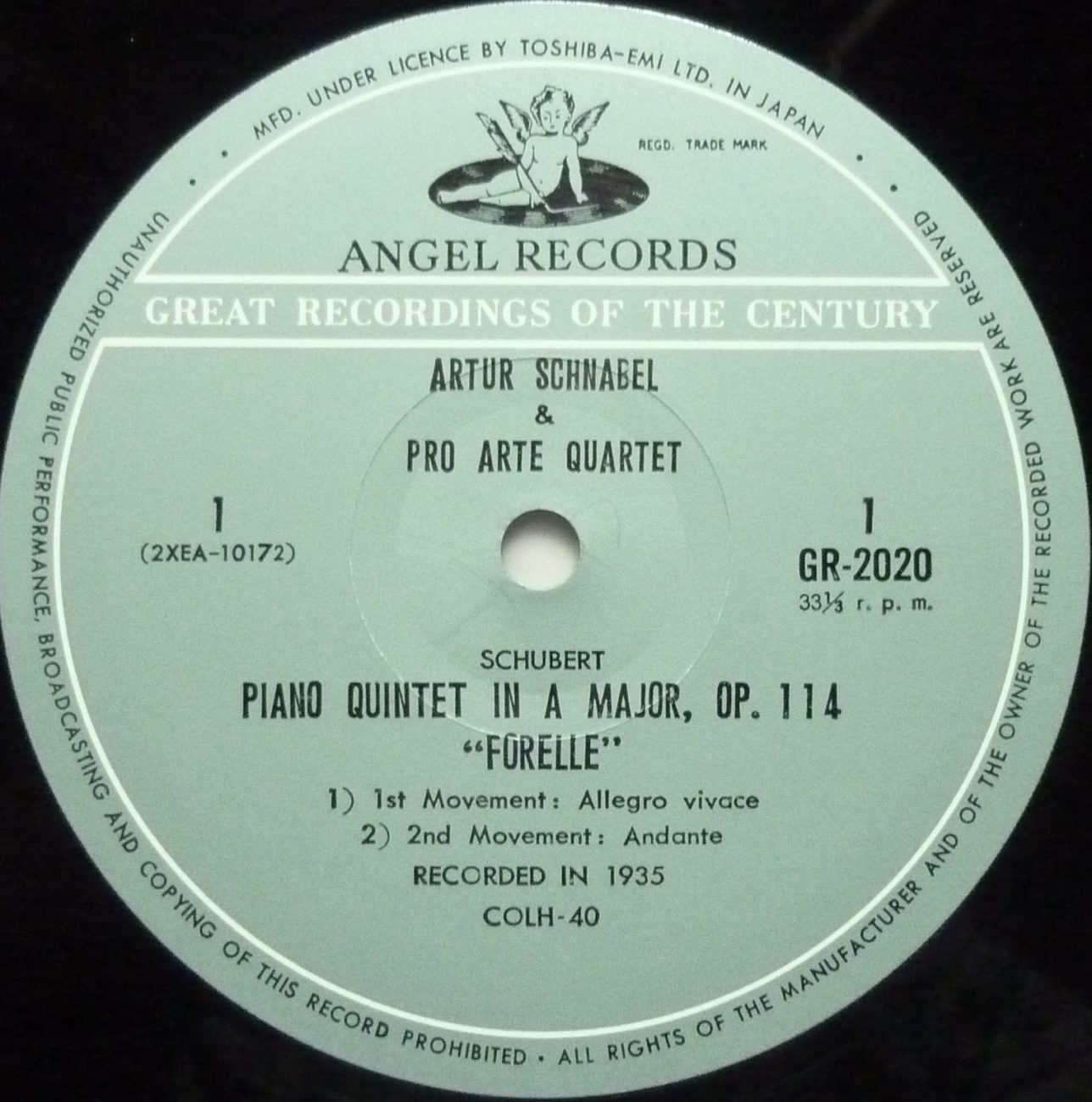
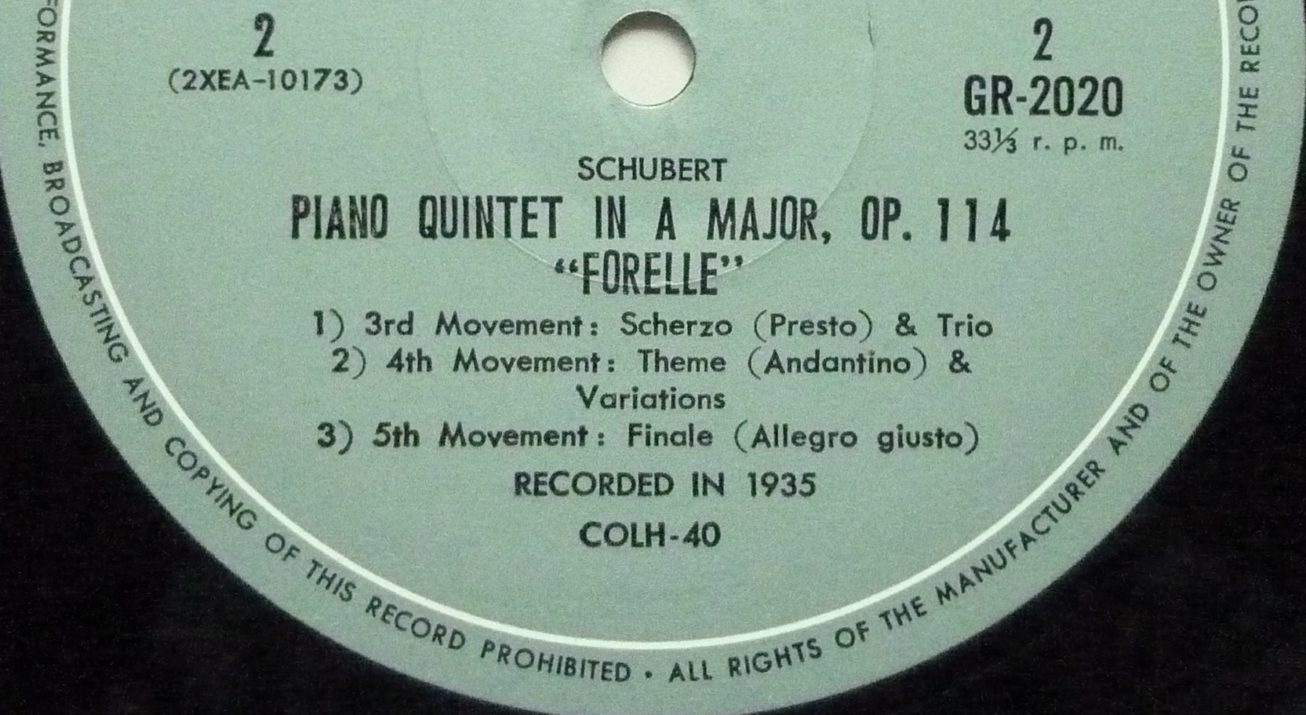
Les liens de téléchargement sont dans le premier commentaire. The download links are in the first comment.



